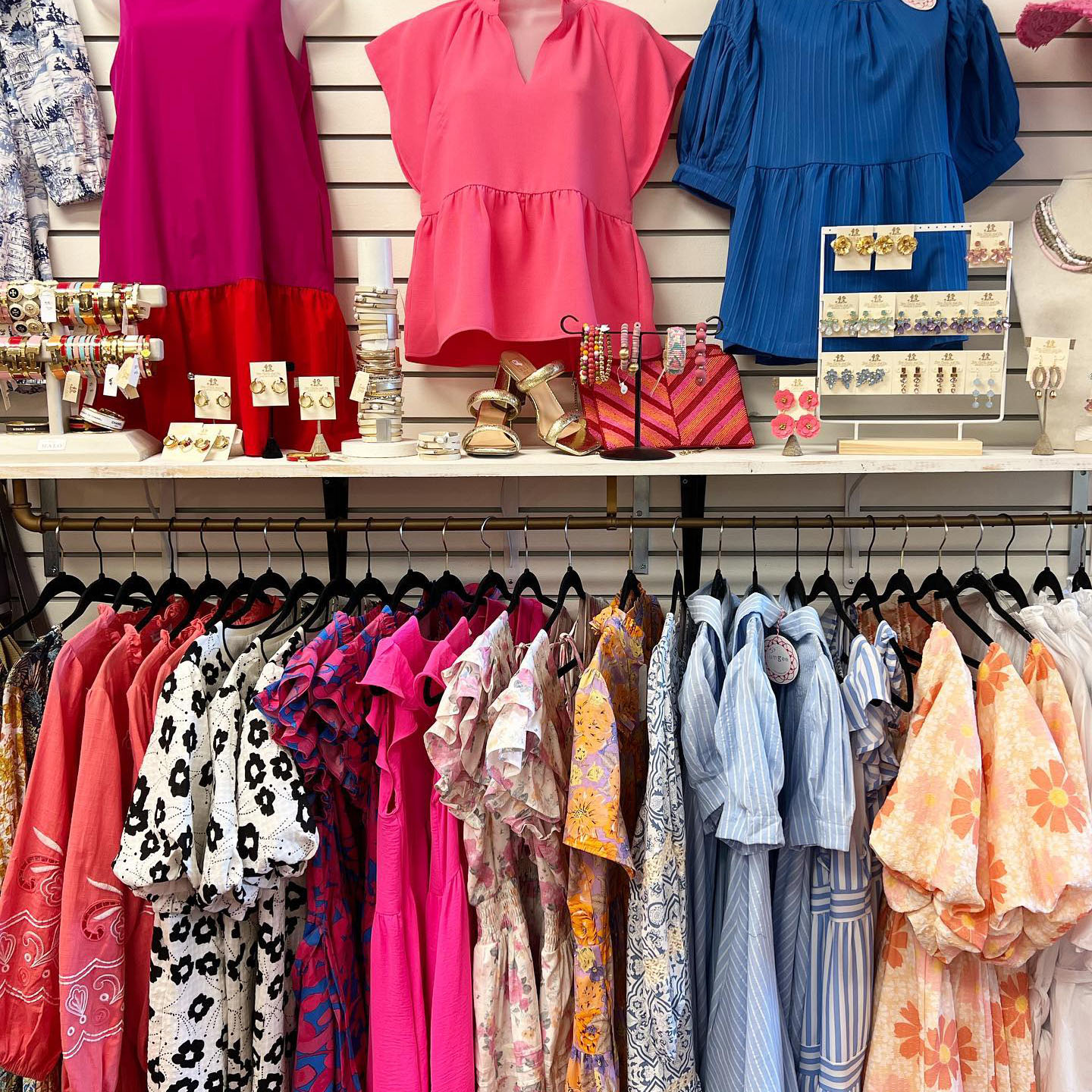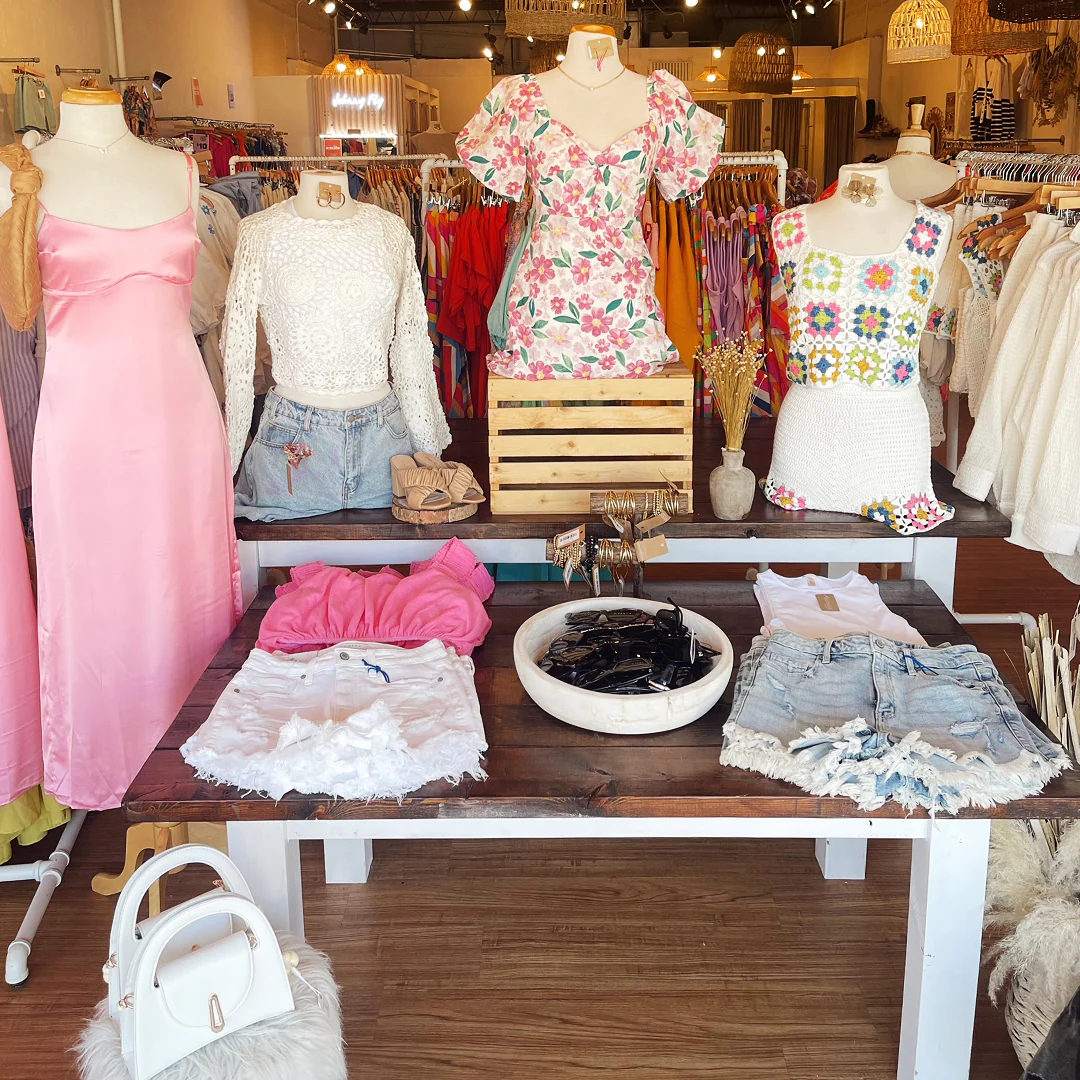The Surge of Online Purchasing: Searching For Boutique Fashion at Your Fingertips
The Surge of Online Purchasing: Searching For Boutique Fashion at Your Fingertips
Blog Article
Lasting Fashion: How Eco-Friendly Garments Is Forming the Future of Design
As the fashion industry faces enhancing scrutiny over its environmental effect, the increase of sustainable style uses an encouraging choice that lines up style with ecological responsibility. boutique fashion. Just how does this activity genuinely influence the future trajectory of style, and what obstacles lie ahead in its widespread fostering?
Ingenious Sustainable Products
As the garment industry faces its environmental impact, innovative lasting products have actually become an important solution for decreasing eco-friendly impacts. Among the most promising materials are those derived from natural, renewable sources, such as natural cotton, hemp, and bamboo. These materials not just lower dependence on fossil gas however also decrease damaging chemical usage and water intake. Organic cotton, as an example, uses dramatically less water than standard cotton and eliminates the demand for poisonous chemicals, consequently preserving soil wellness and biodiversity.
Along with plant-based products, innovations in biofabrication have actually resulted in the advancement of lab-grown textiles. Mycelium leather, obtained from mushroom roots, presents a functional and eco-friendly choice to pet leather. Its production results in significantly lower carbon discharges and water usage, making it a much more sustainable option for fashion developers looking for to line up with green techniques.
Recycled products are likewise obtaining grip, with polyester made from recycled plastic containers representing a considerable innovation. This innovation not just draws away plastic waste from oceans and landfills but also lowers power usage compared to generating virgin polyester. With each other, these materials underscore the capacity for a more lasting fashion business, paving the means for environmentally conscious layout and production.
Eco-Conscious Manufacturing
Structure on the innovations in lasting products, the fashion business is likewise re-evaluating its production processes to better reduce ecological impact. Key strategies consist of minimizing water intake, lowering carbon discharges, and getting rid of hazardous chemicals. By embracing closed-loop systems, producers intend to reuse water and energy successfully, substantially diminishing waste. The assimilation of renewable power resources, such as solar and wind power, right into manufacturing centers additionally cuts dependence on nonrenewable fuel sources.
Another critical element is the decrease of hazardous chemicals typically utilized in coloring and finishing fabrics. Eco-conscious producers are changing in the direction of plant-based dyes and waterless dyeing technologies, which not only protect regional ecosystems however likewise enhance worker safety and security. Advancements like electronic printing lower fabric waste and energy usage, supplying a cleaner alternative to conventional techniques.
In addition, openness and traceability have become vital. With the advancement of blockchain technology, firms can now offer comprehensive insights into their supply chains, making certain honest and eco pleasant methods at each step. This transparency builds customer trust fund and urges brand names to keep high sustainability criteria. As the demand for eco-conscious products grows, producers are compelled to introduce, ensuring that the future of style is both lasting and stylish.
The Surge of Upcycling
Upcycling, a transformative method in sustainable fashion, involves creatively repurposing thrown out materials into brand-new, premium products. This cutting-edge strategy not only minimizes waste however also diminishes the need for raw materials, thereby minimizing the click over here environmental effect of apparel production. By reimagining and rebuilding existing things, designers and style brand names are able to infuse creativity into their collections while promoting ecological obligation.

Furthermore, the upcycling activity has actually equipped small organizations and independent developers, who frequently lead in innovation as a result of their agility and imagination. By taking advantage of the abundant schedule of extra materials, these entities add to a circular economy, showing that fashion can be both stylish and lasting. Via upcycling, the market takes significant strides in the direction of a much more mindful and responsible future.
Thrift Culture's Impact
The burgeoning second hand society considerably reshapes the landscape of lasting style, highlighting the importance of conscious consumption. This social shift motivates consumers to accept pre-owned apparel, thus lowering the demand for brand-new garment production and lessening environmental effect. Second hand buying not just extends the lifecycle of clothes however likewise lowers the carbon impact associated with manufacturing, transferring, and taking care of apparel.
A vital aspect of thrift society is its democratization of style. By offering a large range of designs from numerous eras at cost effective prices, second hand stores make style accessible to a wider target market. This ease of access fosters a sense of originality and creative thinking, as consumers mix and suit distinct items to curate customized wardrobes without adding to the rapid style cycle.
In addition, thrift culture promotes circularity in fashion, aligning with the concepts of a round economic situation. As even more designers and consumers embrace thrift society, the style market is obliged to adapt, integrating lasting practices to meet the expanding demand for eco-conscious alternatives.

Future Trends in Style
Fashion's evolution is increasingly formed by technical developments and sustainability-driven initiatives. One famous fad is the rise of electronic style, where virtual garments can be used in enhanced fact environments, substantially reducing fabric waste.
Additionally, the assimilation of blockchain technology offers new possibilities in openness and traceability, permitting customers to validate the sustainability credentials of their clothing. boutique fashion. This guarantees responsibility in supply chains and advertises honest sourcing techniques. 3D printing is yet an additional technology that promises to transform manufacturing processes by enabling on-demand production, thereby decreasing excess stock and waste
Furthermore, the advancement of bio-fabricated materials, such as lab-grown leather and plant-based fabrics, provides lasting options to standard products. These advancements decrease reliance on animal products and resource-intensive plants. As these modern find more technologies grow, they are positioned to transform the fashion landscape, merging design with sustainability. The future of style, as a result, depends on a seamless blend of technology, innovation, and eco-friendly duty.
Conclusion
The improvement of the garment industry via sustainable practices indicates a pivotal change towards ecological responsibility. The integration of cutting-edge products, eco-conscious manufacturing strategies, and the embracement of upcycling and thrift society visit our website underscores a dedication to decreasing ecological impacts. As these practices obtain momentum, they redefine the sector's narrative by prioritizing lasting and moral options. This advancement not just lines up style with environmental sustainability yet also establishes a precedent for future fads focused on duty and development.
As the style market encounters enhancing examination over its ecological influence, the rise of lasting style offers a promising option that straightens style with environmental duty.As the fashion industry grapples with its environmental influence, cutting-edge sustainable products have actually arised as a crucial option for lowering ecological footprints. Together, these materials underscore the potential for a more sustainable fashion sector, paving the means for environmentally conscious design and manufacturing.
Structure on the advancements in lasting products, the fashion market is likewise re-evaluating its manufacturing processes to even more decrease environmental effect. boutique fashion.Upcycling, a transformative method in sustainable fashion, involves creatively repurposing thrown out products right into brand-new, high-grade items
Report this page